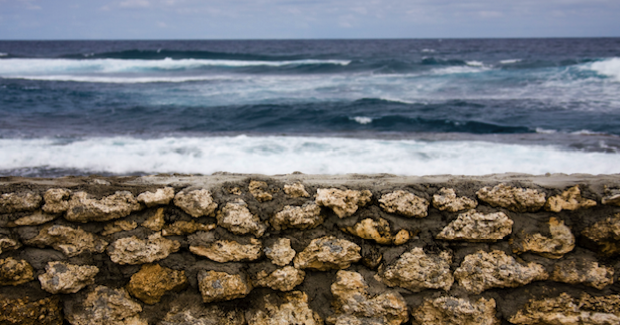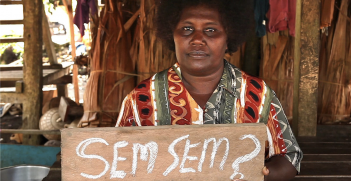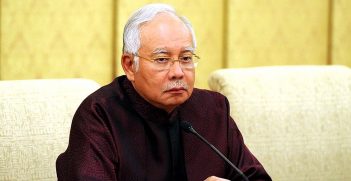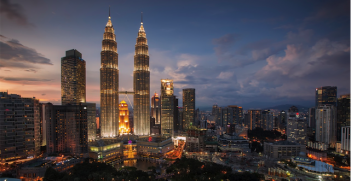Waving not Drowning: Pacific Responses to Climate Change

The future of the Pacific island nations is nowadays very much tied to the impact of climate change. Millions of dollars are being poured into the region in the hope that this investment will make people better prepared for a future with climate change. But how do we know which of these efforts are making a difference?
The Pacific islands are nowadays very much tied to images of rising sea levels, losses of island nations and damage from extreme events such as Cyclone Pam in Vanuatu last year. Cyclone Pam was in many ways a surprise in the context of extreme events and human-induced climate change. Although Vanuatu is a country with extensive experience in dealing with cyclones, this first category five cyclone with windspeeds up to 320 km per hour led to unprecedented simultaneous destruction across multiple islands. Many of the islands were completely brown, with no green leaves left. Around the same time El Nino began leading to less rainfall and drier conditions, which made recovery of both ecosystems and people much harder.
Given the projected impacts of a rapidly changing climate, millions of dollars are being poured into the region through climate change adaptation funds, projects, programs and policy work. But how do we know which of these efforts are making a difference? There are several underlying issues that need to be taken into consideration when trying to answer this question.
The context: politics and population
The human population is unevenly distributed in the Pacific region. The atoll nations only hold a fraction of the population: compare Tuvalu’s 10,000 inhabitants with the 7 million who live in Papua New Guinea. Melanesian island nations, such as Papua New Guinea, Solomon Islands, Fiji and Vanuatu, are home to a significantly higher number of people than atoll countries. While these Melanesian countries are supportive of climate change action as advocated by the Alliance of Small Island States (AOSIS) in the international climate change negotiations, the distinct challenges that these big island nations face go often unreported and unnoticed in the discussions what the ‘Pacific’ should do. In other words, ‘the Pacific’ and its challenges are much more diverse than the media’s and research community’s focus on small atoll nations and sea level rise. While most islands are highly vulnerable, there are also significant differences in perceptions and priorities for adaptation that differ based on location (rural versus urban areas, coastal versus inland, women versus men).
Processes and issues around decolonisation, settlement patterns, role of traditional knowledge, rural-urban migration, and role of women are still key issues in the region. Many environmental and natural resource management issues stem in their current form from poor management and are not caused by climate change as such. Sand mining from beaches, pollution and lack of enforcement of environmental impact assessments for proposed developments cause problems already today even without climate change.
Many of these countries have relatively recently gained independence and are still working out contemporary rule of law and how to balance a Westminster Parliamentary system with local customary governance systems and tribal connections that are very much alive and part of people’s daily lives. These underlying issues need to be addressed and acknowledged in development and adaptation efforts. Adaptation or ‘climate-proofing’ will not fix inequality or lack of regulations and their enforcement.
Moving forward
One of the problematic aspects of climate adaptation projects are their monitoring and evaluation (M&E). This is something that in general the development agencies do well but given the longer timeframes often required to measure adaptation success adequately makes it more difficult. Partly this is complicated by the short timeframes and project based approaches to adaptation where 12 months of funding is supposed to deliver a ‘climate-adapted’ community.
A way around this would be to invest in long-term strategic programs and decade-long frameworks to be able to judge the impact. This would reduce funding uncertainty, and enable a longer M&E process to actually generate data and insights as to what has worked. Many agencies and organisations are now focused on multi-benefit approaches where projects deliver particular benefits now with an eye also on future benefits. For example, building cyclone proof housing in the Pacific would benefit populations now who experience cyclones and will in the future. Outside of the cyclone season, such buildings can be used for other purposes such as schools and hospitals.
The main point with adaptation in the Pacific is to do things that make sense now while building in future benefits as well. While awareness raising of climate change impacts is spreading fast across the region, at the same time we need to critically evaluate what actions are making a real difference to the people today.
Dr Johanna Nalau is a social scientist who researches climate adaptation policy and decision-making processes. She is a contributing author for the Intergovernmental Panel on Climate Change latest assessment report and holds a PhD in Climate Change Adaptation from Griffith University.
The photo is contributed by the author. This article is drawn from an address given by Dr Johanna Nalau to the AIIA Queensland on 28 June 2016. It is published on this website under a Creative Commons Licence and may be republished with attribution.





